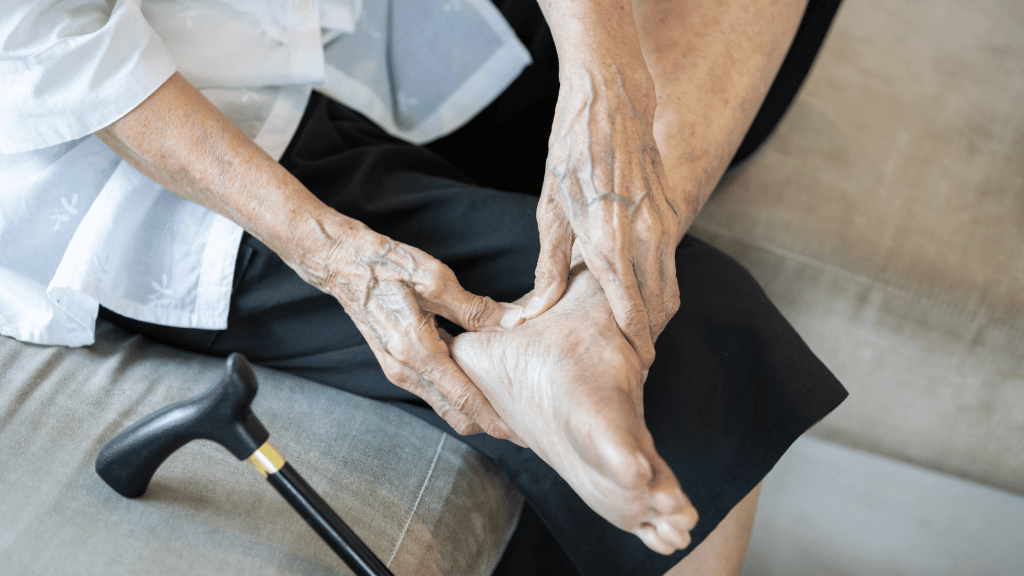Plantar fasciitis is a pathological disorder that impacts the plantar fascia, a band of tissue located in the heel and arch regions of the foot. Heel discomfort is common and can hinder walking and exercising. This disease is caused by the plantar fascia’s inflammatory response, a strong connective tissue that connects the heel to the forefoot. While the condition can affect anyone, it is most observed in runners, overweight individuals, and those wearing inadequately supportive footwear. Consulting healthcare professionals about persistent heel pain is crucial.
Causes
Plantar fasciitis derives its origins from an array of underlying conditions and comprehending these causal factors stands pivotal in effective treatment and prevention. Accessing guidance through Consultdoc’s GP near me service can be really effective in further guiding you related to this disease:
-
Age and Occupation
Individuals within the age range of 40 to 60 years exhibit a heightened vulnerability to the development of plantar fasciitis. Moreover, those belonging to professional occupations, such as educators, healthcare practitioners, and industrial laborers, who spend long hours standing, are at higher risk.
-
Physical Activity
specific physical activities, such as running, basketball, and other exercises that strain the heel, can also lead to this condition. Seeking guidance from a doctor in person or via online doctor consultation on Consultdoc can provide you with valuable insights into preventive measures.
-
Foot Mechanics
Having flat feet, high arches, or an abnormal walking pattern can affect the weight distribution when you’re standing and can put additional stress on the plantar fascia.
-
Weight
Being overweight increases the pressure on your plantar fascia, contributing to the risk of inflammation or damage. Nutritional advice tailored to reduce this risk can be beneficial.
Symptoms
Identifying the symptoms is the initial and essential step towards effective treatment and pain alleviation. With online GP registration on Consultdoc, you can swiftly assess your condition, receive a timely diagnosis, and obtain valuable medical guidance to address your concerns.
-
Morning Pain
A stabbing pain that occurs with the first few steps in the morning is a significant indicator of this condition.
-
Activity-Induced Pain
The pain can also flare up after standing for long periods or after rising from sitting. It’s usually more acute after exercise, rather than during the activity.
-
Heel Tenderness
The pain is generally localized around the heel, and there might be some tenderness to the touch.
-
Reduction of Pain
Some individuals notice a temporary reduction in pain as they start to move around, but this relief is often short-lived.
Accurate Diagnosis
Timely diagnosis is crucial for the effective management of plantar fasciitis. The diagnostic process in healthcare often commences with a comprehensive foot examination conducted by a healthcare provider. Subsequently, imaging tests such as X-rays or MRI scans may be employed to eliminate alternative conditions. These processes can be sped up with the convenience of online GP services on Consultdoc, which provides consultations to assess your medical history, symptoms, and lifestyle choices before recommending a specialist.
Treatment Options
-
Anti-Inflammatory Medications
One of the initial treatments for plantar fasciitis often includes anti-inflammatory drugs like ibuprofen. These medications help to reduce inflammation and provide some relief from pain, serving as a first-line treatment option for many patients.
-
Physical Therapy
Physical therapy is another common treatment strategy aimed at stretching and strengthening the plantar fascia and surrounding muscles. Through targeted exercises, this approach helps to improve the structural integrity of the foot, aiding in long-term relief.
-
Advanced Treatments
When conservative methods such as medications and physical therapy fail to yield results, more advanced treatments may be considered. This includes options like shockwave therapy, which stimulates healing and reduces pain through acoustic waves.
-
Orthotic Support
Custom-made orthotic devices like shoe inserts can offer additional benefits in the treatment. These devices provide extra cushioning and support, helping to distribute the pressure on your foot more evenly, thus alleviating discomfort.
Importance of Physical Therapy
Physical therapy plays a significant role in the treatment of Plantar Fasciitis. Exercises aimed at stretching and strengthening the plantar fascia and Achilles tendon can help improve muscle tone and alleviate symptoms. Physical therapists often recommend exercises that can be performed at home, providing flexibility and convenience. Through online GP registration services on Consultdoc, you can easily access consultations, making it more convenient to maintain consistent therapy sessions and follow-up appointments, thereby enhancing treatment adherence.
Preventive Measures
-
Lifestyle Changes
Taking a proactive approach through lifestyle changes like weight loss can significantly reduce the risk of developing it. Excess weight puts additional stress on the plantar fascia, making weight management crucial for prevention.
-
Footwear Choices
Selecting the right footwear is another preventive measure. Shoes with good arch support and cushioning can alleviate unnecessary pressure on the foot, serving as a preventative against plantar fasciitis.
-
Daily Foot Exercises
Regular foot workouts that strengthen the muscles and make the foot more flexible can help keep the feet in good shape. You can change these exercises to fit your needs.
Conclusion
The absence of medical intervention for Plantar Fasciitis possesses the capacity to considerably diminish an individual’s overall well-being and hinder their capability to perform everyday activities. By seeking timely medical advice, making lifestyle adjustments, and exploring various treatment options, individuals can regain their quality of life and alleviate the discomfort associated with Plantar Fasciitis. Remember, it’s not just about treating the symptoms; it’s about taking proactive steps to ensure long-term foot health and overall well-being. Your journey to pain-free steps begins with informed decisions and a commitment to your health.
